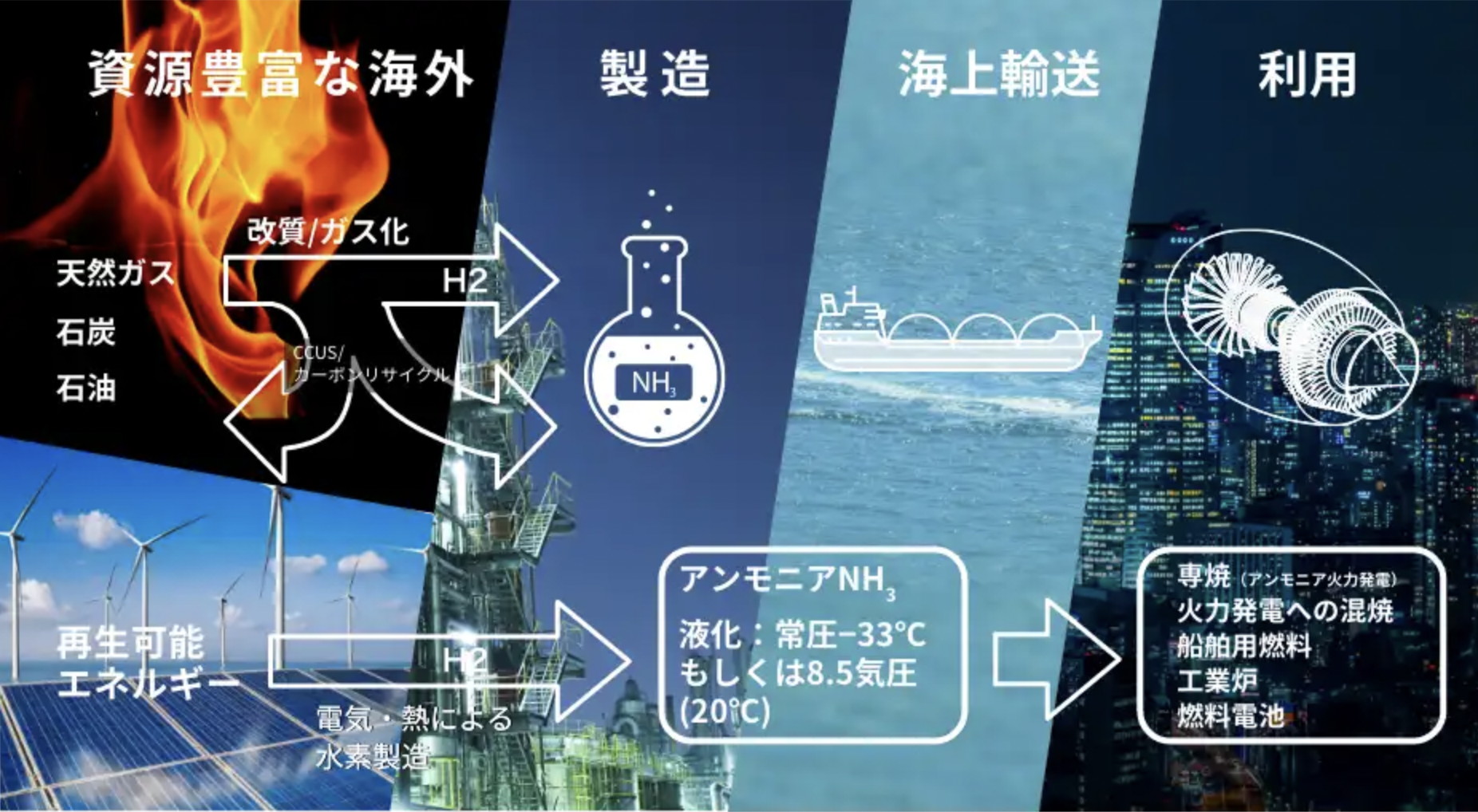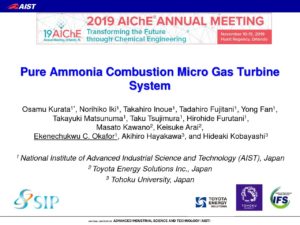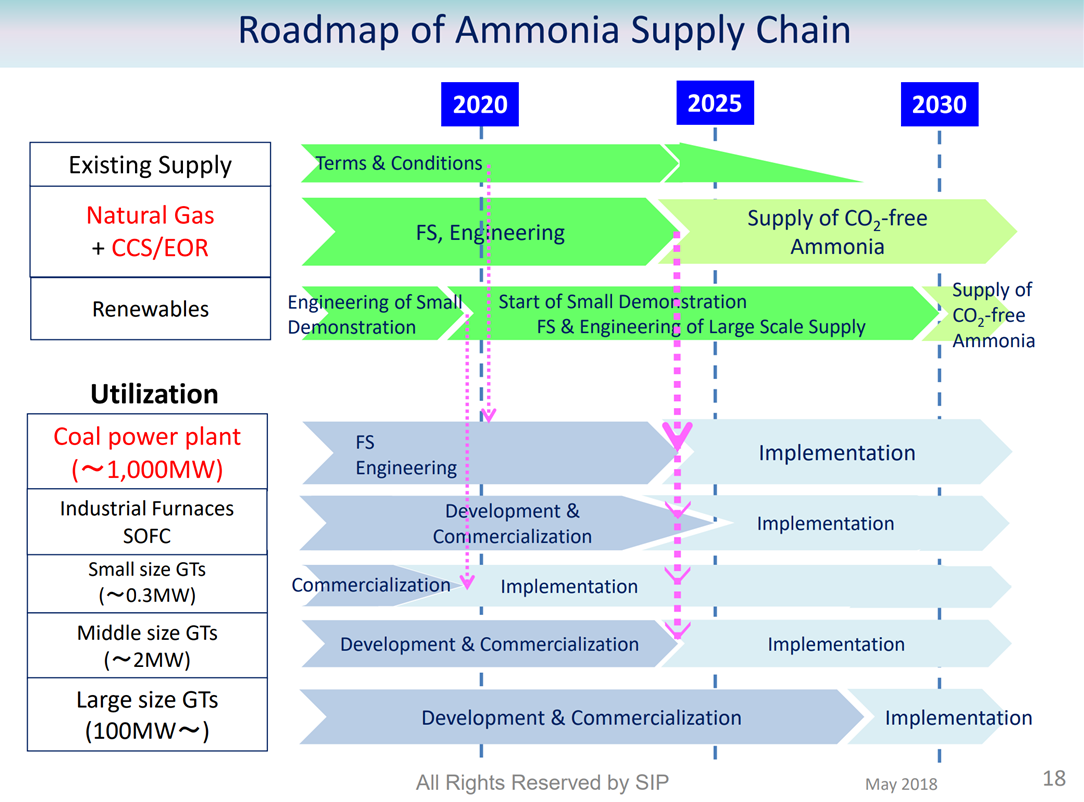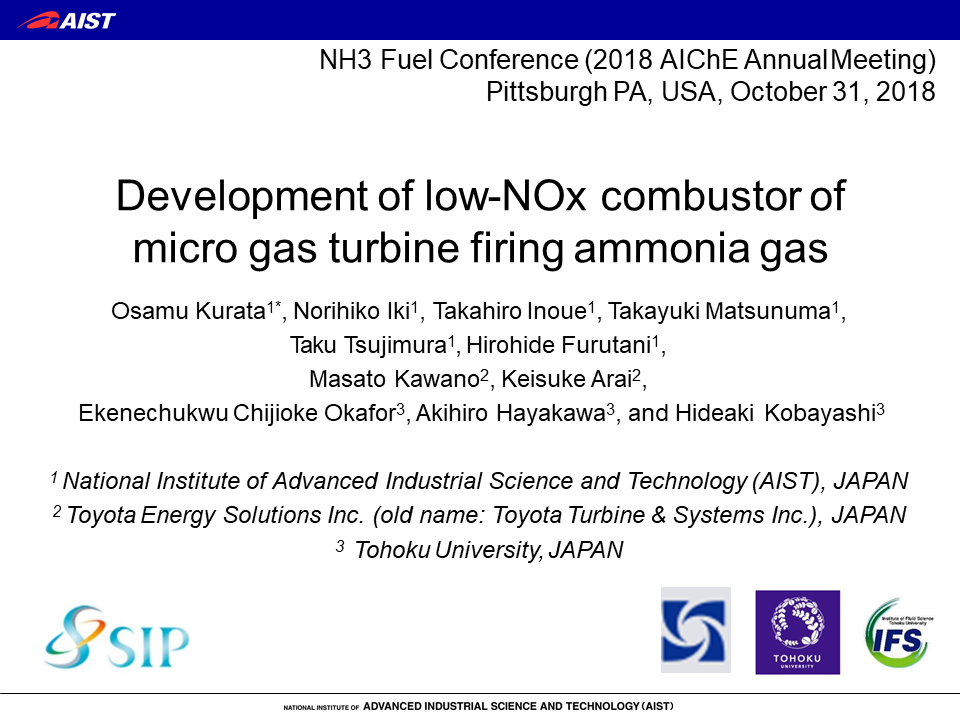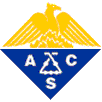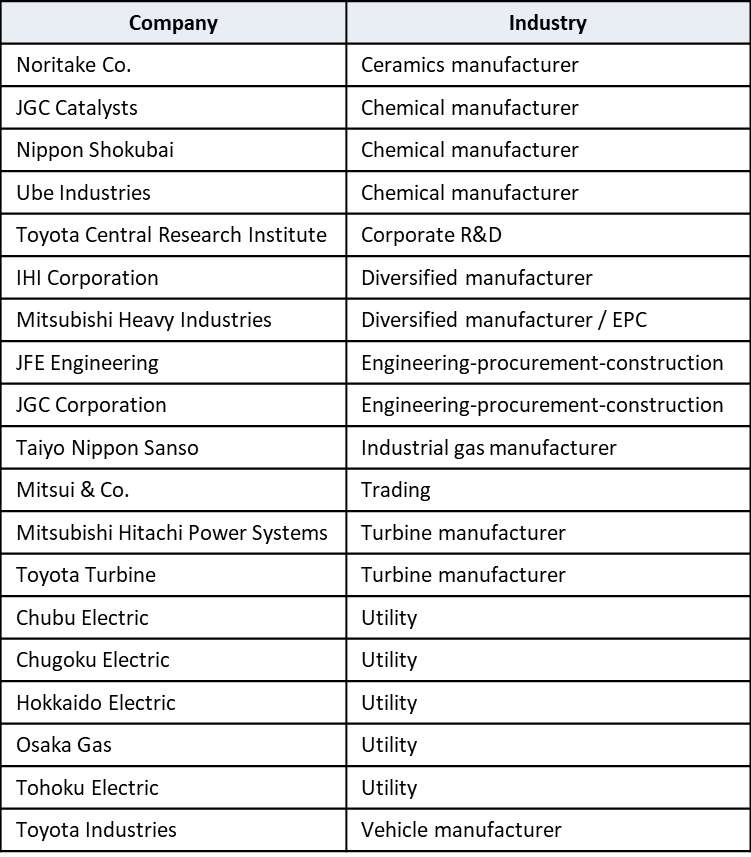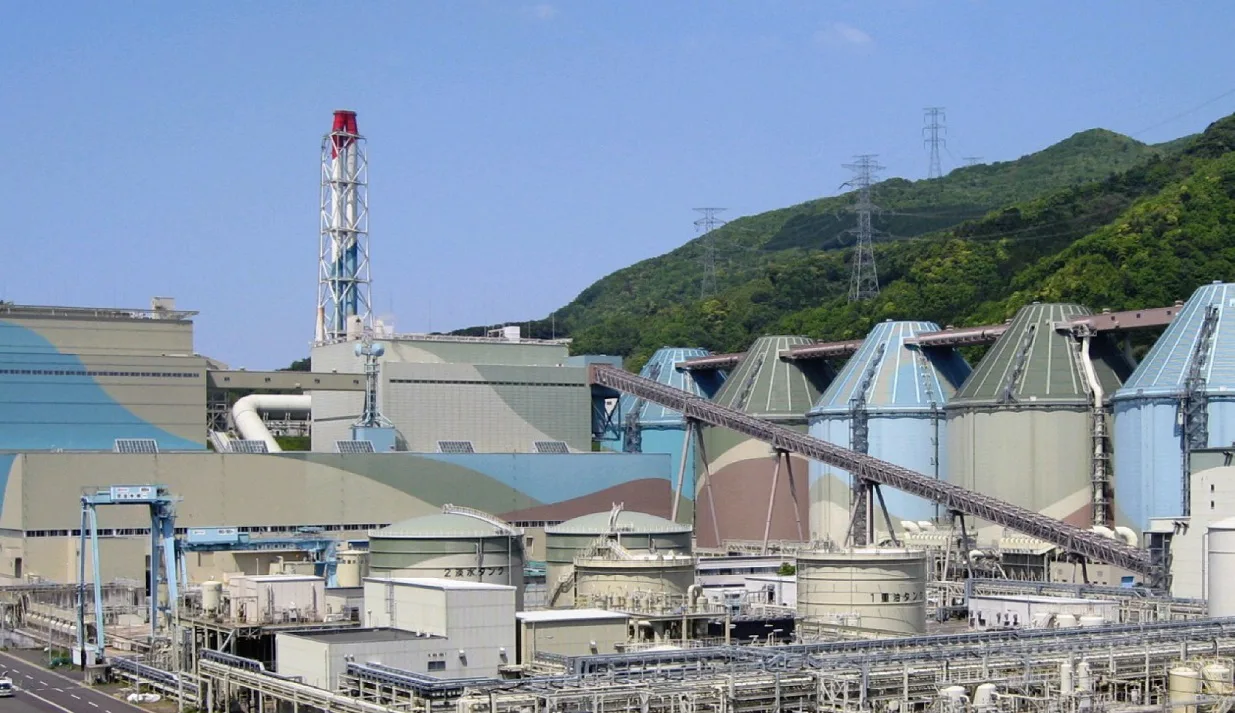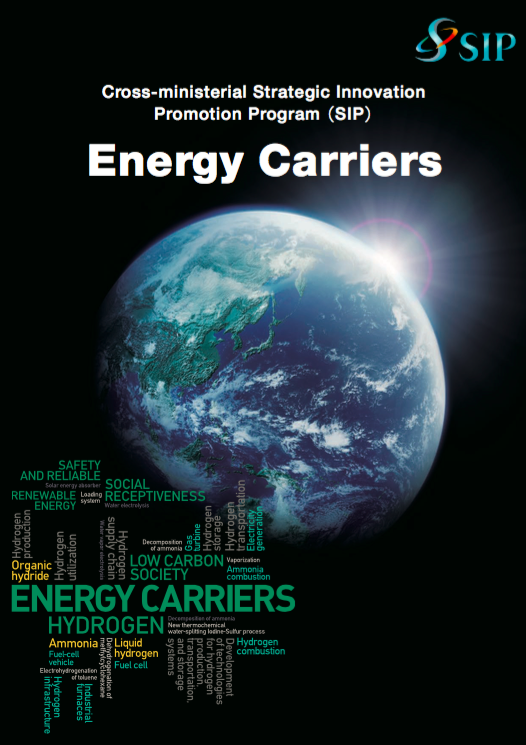Japanese government funding via NEDO will support four critical ammonia energy projects, including JERA's new plan to demonstrate 50% ammonia-coal co-firing by 2030. Other projects include improved catalysts for ammonia production, low-temperature and low-pressure synthesis pathways, and developing 100% ammonia-fed boilers and gas turbines. In addition, a new cooperation agreement between ASEAN countries will see Japan support other members to adopt their ammonia energy solutions, particularly coal co-firing.
Content Related to Tohoku University
Article
Cardiff-KAUST-Tohoku Young Researcher Workshop on Ammonia Energy
Marina Kovaleva March 24, 2021
Organised by a panel of young researchers — and for young researchers — Cardiff University, KAUST and Tohoku University hosted a virtual workshop on ammonia energy. Each group showed their most recent research developments through the two-day event, attracting 50+ participants from the three groups alone. The event included research introductions from the research leaders of each group as well as quizzes, discussion rooms, prizes. Each group selected 6 early career presenters to feature their latest work in the topics of chemistry and microflow reactors, laminar and turbulent flames and applications. Taking advantage of the discussion sessions, this workshop hopes to promote large scale international collaboration and a researcher exchange programme in ammonia energy.
Article
A Deep Dive into SIP "Energy Carriers" Ammonia Combustion Research
Bunro Shiozawa September 23, 2020
From 2014 to 2018 Bunro Shiozawa served as Deputy Program Director of the SIP “Energy Carriers” initiative in Japan. Over the last year he has published a ten-part series of articles that describe and reflect on the research supported by the initiative. Part 4 covers ammonia combustion technologies. The first half of the article follows, in Shiozawa's English translation. The second half will be posted in the near future.
Presentation
Pure Ammonia Combustion Micro Gas Turbine System
Ekenechukwu Chijioke OkaforOsamu KurataNorihiko IkiTakahiro InoueTadahiro FujitaniYong FanTakayuki MatsunumaTaku TsujimuraHirohide FurutaniMasato KawanoKeisuke AraiAkihiro HayakawaHideaki Kobayashi
To protect against global warming, a massive influx of renewable energy is expected. Although hydrogen is a renewable media, its storage and transportation in large quantity has some problems. Ammonia fuel, however, is a hydrogen energy carrier and carbon-free fuel, and its storage and transportation technology is already established. In the 1960s, development of ammonia combustion gas turbines was abandoned because combustion efficiency was unacceptably low [1]. Recent demand for hydrogen energy carriers has revived the interest in ammonia as fuel [2, 3]. In 2015, ammonia-combustion gas turbine power generation was reported in Japan using a 50-kW class micro gas…
Article
Ammonia Gas Turbines on European R&D List
Stephen H. Crolius January 11, 2019
ETN Global’s latest R&D Recommendation was released in October 2018. ETN stands for European Turbine Network and its technology of interest is the gas turbine. The 2018 Recommendation is notable because it is the first that includes ammonia on the R&D agenda.
Presentation
Performance of Ammonia-Natural Gas Co-Fired Gas Turbine for Power Generation
Ammonia is paid special attention as renewable energy carrier [1-3], because it offers advantages in generation, transportation and utilization. Haber-Bosch method is already established as ammonia generation method; large amount of ammonia is already used as fertilizer and chemical raw material. Ammonia can be liquefied at room temperature. Its transport and storage system are already established. Ammonia is cheaper to transport than hydrogen. Ammonia can be used as carbon-free fuel in internal combustion engines as alternative to conventional hydrocarbon fuels. However, it has different combustion characteristics. For example, the nitrogen atom contained in the ammonia molecule, causes high NOx emission…
Presentation
Two Stage Ammonia Combustion in a Gas Turbine like Combustor for Simultaneous NO and Unburnt Ammonia Reductions
Ammonia is expected not only as a hydrogen energy carrier but also as a carbon free fuel. Recently, ammonia fueled gas turbine combustor was successfully demonstrated. However, large amount of NOx was produced when ammonia burns because ammonia includes nitrogen atom in the ammonia molecule. In addition, unburnt ammonia concentration in exhaust gas also needs to be reduced. In this study, we proposed a combustion concept in order to reduce NO and unburnt ammonia concentrations in the exhaust gas simultaneously in a gas turbine like model swirl combustor. In this concept, two stage (rich – lean) combustion was employed. Two…
Presentation
Development of Low-NOx Combustor of Micro Gas Turbine Firing Ammonia Gas
Osamu KurataNorihiko IkiTakahiro InoueTakayuki MatsunumaTaku TsujimuraHirohide FurutaniMasato KawanoKeisuke AraiEkenechukwu Chijioke OkaforAkihiro HayakawaHideaki Kobayashi
A massive influx of renewable energy is required in order to mitigate global warming. Although hydrogen is a renewable media, its storage and transportation in large quantity is difficult. Ammonia, however, is a hydrogen energy carrier, and its storage and transportation technology is already established. Although ammonia fuel combustion was studied in the 1960s in the USA, the development of an ammonia fuel gas turbine had been abandoned because combustion efficiency was unacceptably low [1]. Recent demand for hydrogen energy carrier revives the usage of ammonia fuel. The National Institute of Advanced Industrial Science and Technology (AIST) in Japan, in…
Article
Full program announced for the 2018 NH3 Event Europe
Trevor Brown February 08, 2018
The second annual European Conference on Sustainable Ammonia Solutions has announced its full program, spread over two days, May 17 and 18, 2018, at Rotterdam Zoo in the Netherlands. The international cadre of speakers, representing a dozen countries from across Europe as well as the US, Canada, Israel, and Japan, will describe global developments in ammonia energy from the perspectives of industry, academia, and government agencies.
Presentation
Methods for Low NOx Combustion in Ammonia / Natural Gas Dual Fuel Gas Turbine Combustor
Ammonia is a carbon-free fuel, so it has potential to reduce carbon dioxide emission from power plants when used as a fuel. However, combustion characteristics of ammonia are notably different from hydrocarbon fuels, especially regarding NOx emission [1]. The nitrogen atom of the ammonia molecule may cause high NOx emission. Therefore, special techniques to reduce NOx emission are essential for gas turbine combustors which burn ammonia and natural gas. The results of our previous study [2] showed the characteristics of NOx emission in single-stage combustion. In this study, the concept for low-emission combustion in two-stage combustion has been examined numerically…
Presentation
Combustion Emissions from NH3 Fuel Gas Turbine Power Generation Demonstrated
Osamu KurataNorihiko IkiTakahiro InoueTakayuki MatsunumaTaku TsujimuraHirohide FurutaniHideaki KobayashiAkihiro Hayakawa
To protect against global warming, a massive influx of renewable energy is expected. Although H2 is a renewable media, its storage and transportation in large quantity is difficult. NH3 fuel, however, is an H2 energy carrier and carbon-free fuel, and its storage and transportation technology is already established. Although NH3 fuel combustion was studied in the 1960s in the USA, the development of an NH3 fuel gas turbine had been abandoned because combustion efficiency was unacceptably low [1]. Recent demand for H2 energy carrier revives the usage of NH3 fuel, but no one has attempted an actual design setup for…
Article
254th ACS Meeting, Energy and Fuels Symposium “The Ammonia Economy” — Oxidation, Catalytic Cracking & Storage
Martin Owen Jones October 31, 2017
In August of 2017 a symposium on the Ammonia Economy was held in Washington DC as part of the Energy and Fuels Division of the American Chemical Society (ACS) conference. The symposium was devised to explore the latest results from ammonia related research, including but not limited to; advances in the generation of ammonia, advances in the catalytic cracking of ammonia to nitrogen and hydrogen, ammonia storage and utilisation, detectors and sensors for ammonia, ammonia fuel cells and hydrogen from ammonia, ammonia combustion and ammonia safety.
Article
SIP "Energy Carriers" video: ammonia turbines, industrial furnaces, fuel cells
Trevor Brown October 13, 2017
To demonstrate the progress of the SIP "Energy Carriers" program, the Japan Science and Technology Agency last week released a video, embedded below, that shows three of its ammonia fuel research and development projects in operation. R&D is often an abstract idea: this video shows what it looks like to generate power from ammonia. As it turns out, fuel cells aren't hugely photogenic. Nonetheless, if a picture is worth a thousand words, this will be a long article.
Article
Advances in Ammonia-Fired Gas Turbines Open Up Major Use Case
Stephen H. Crolius October 06, 2017
In the last 12 months ... Researchers seeking to fire gas turbines with ammonia made significant strides toward realization of commercial-scale machines in both the U.K. and Japan. This means that electricity generation has become a realistic near-term use-case for ammonia energy.
Article
Green Ammonia Consortium: Bright Prospects in Japan for Ammonia as an Energy Carrier
Stephen H. Crolius October 05, 2017
In the last 12 months ... In July 2017, 19 companies and three research institutions came together to form the Green Ammonia Consortium. Before this development, it was unclear whether ammonia would find a significant role in Japan’s hydrogen economy. In the wake of this announcement, however, ammonia seems to have claimed the leading position in the race among potential energy carriers.
Article
Major Development for Ammonia Energy in Japan
Stephen H. Crolius August 10, 2017
On July 25, the Japan Science and Technology Agency (JST) announced that a collection of companies and research institutions had come together to form a Green Ammonia Consortium. The 22-member group will take over responsibility for the ammonia aspect of the Cross-Ministerial Strategic Innovation Program (SIP) Energy Carriers agenda when the SIP is discontinued at the end of fiscal 2018. A JST press release states that the Consortium intends to develop a strategy for “forming [an] ammonia value chain,” promote demonstration projects that can further commercialization, and enable “Japanese industry to lead the world market.”
Article
Industrial demonstrations of ammonia fuel in Japan
Trevor Brown March 06, 2017
Most of the ammonia energy projects I write about are in the research and development phase but, as I've said before, technology transfer from the academic lab to commercial deployment is moving swiftly - especially in Japan. Last week, Nikkei Asian Review published two articles outlining plans by major engineering and power firms to build utility-scale demonstrations using ammonia as a fuel for electricity generation. Both projects aim to reduce the carbon intensity of the Japanese electrical grid, incrementally but significantly, by displacing a portion of the fossil fuels with ammonia. The first project will generate power using an ammonia-coal mix, while the second will combine ammonia with natural gas.
Article
Ammonia-Fueled Gas Turbine Power Generation
Ammonia Energy News February 16, 2017
Hideaki Kobayashi, professor at the Institute of Fluid Science at Tohoku University in Sendai, Japan, has developed the world’s first technology for direct combustion of ammonia in a gas turbine. The advance was made in cooperation with the National Institute of Advanced Industrial Science and Technology (AIST) under a program led by Norihiko Iki.
Article
Ammonia Turbine Power Generation with Reduced NOx
Trevor Brown October 06, 2016
A common concern with ammonia fuel is that NOx emissions will be too high to control. However, in new research from Turkey, USA, and Japan, presented at this year's NH3 Fuel Conference in September 2016, two things became clear. First, NOx emissions can be reduced to less than 10ppm by employing good engineering design and exploiting the chemical properties of ammonia, which plays a dual role as both the fuel and the emissions-cleanup agent. Second, the deployment of ammonia-fueled turbines for power generation is not only feasible, but actively being developed, with demonstration units running today and improved demonstration projects currently in development.
Presentation
Development of ammonia / natural gas dual fuel gas turbine combustor
NH3 is a carbon-free fuel, so it has the potential to reduce CO2 emission from the power plant when used as a fuel. However, NH3 has combustion characteristics different from conventional hydrocarbon fuels. The N atom in the ammonia molecule causes high NOx emission through combustion reactions. To develop a gas-turbine combustor, which burns a combination of NH3 and natural gas with controlled emissions, combustion characteristics have been studied experimentally and numerically by using a swirl-burner, which is typically used in gas-turbines. Detailed exhaust gas compositions of the burner have been measured under atmospheric pressure and fuel lean conditions. As…
Presentation
Combustion characteristics of ammonia/air flames for a model swirl burner and an actual gas turbine combustor
Akihiro HayakawaK.D. Kunkuma A. SomarathneEkenechukwu Chijioke OkaforTaku KudoOsamu KurataNorihiko IkiHideaki Kobayashi
Ammonia is expected not only as hydrogen energy carrier but also as carbon free fuel. For an industrial use of ammonia combustor, ammonia flame stabilized on a swirl combustor should be clarified. However, in order to realize an ammonia-fueled combustor, there are some issues to be solved, such as a difficulty of flame stabilization and reductions of NOx and ammonia emission. In this study, stabilization and emission characteristics of ammonia / air flames stabilized by a model swirl burner are investigated. The outer and inner diameters of the swirler are 24 mm and 14 mm, respectively, and the swirl number…
Presentation
Power Generation and Flame Visualization of Micro Gas Turbine Firing Ammonia or Ammonia-Methane Mixture
Norihiko IkiOsamu KurataTakayuki MatsunumaTakahiro InoueTaku TsujimuraHirohide FurutaniHideaki KobayashiAkihiro Hayakawa
A demonstration test with the aim to show the potential of ammonia-fired power plant is planned using a micro gas turbine. 50kW class turbine system firing kerosene is selected as a base model. A standard combustor is replaced to a prototype combustor which enables a bi-fuel supply of kerosene and ammonia gas. Diffusion combustion is employed to the prototype combustor due to its flame stability. 44kW power generation was achieved by 100% heat from ammonia gas. Although NOx concentration in the exhaust gas of ammonia combustion exceeded 500ppm, NOx removal equipment reduced NOx concentration below 10ppm. Over 30kW power generation…
Presentation
Enhancement of reaction and stability of ammonia flames using hydrogen addition and swirling flow
Enhancement of reaction and stability of ammonia flames using hydrogen addition and swirling flow Akihiro Hayakawa*, Akinori Ichikawa, Yoshiyuki Arakawa, Taku Kudo and Hideaki Kobayashi, Institute of Fluid Science, Tohoku University
Presentation
Combustion characteristics of ammonia/natural gas dual fuel burner for gas turbine combustor
Combustion characteristics of ammonia/natural gas dual fuel burner for gas turbine combustor Shintaro Ito*, Soichiro Kato, Tsukasa Saito, Toshiro Fujimori, IHI Corporation; Hideaki Kobayashi, Institute of Fluid Science, Tohoku University
Presentation
Micro Gas Turbine Firing Ammonia
Norihiko IkiOsamu KurataTakayuki MatsunumaTakahiro InoueMasato SuzukiTaku TsujimuraHirohide FurutaniHideaki KobayashiAkihiro HayakawaYoshiyuki ArakawaMasanori Ichikawa
Micro Gas Turbine Firing Ammonia Norihiko Iki*, Osamu Kurata, Takayuki Matsunuma, Takahiro Inoue, Masato Suzuki, Taku Tsujimura and Hirohide Furutani, National Institute of Advanced Industrial Science and Technology (AIST), Fukushima Renewable Energy Institute (FREA); Hideaki Kobayashi, Akihiro Hayakawa, Yoshiyuki Arakawa, Masanori Ichikawa, Institute of Fluid Science, Tohoku University
Presentation
Fundamental Characteristics of Ammonia/Air Premixed Laminar Flames
Fundamental flame characteristics must be required for the design of ammonia fueled combustors. However, few studies of ammonia combustion have been conducted. In this study, fundamental ammonia/air premixed laminar flame characteristics, such as NO formation/reduction mechanisms and laminar burning velocity, were experimentally and numerically investigated. NO mole fraction in burned gas from ammonia/air premixed flames were investigated using a stainless-steel nozzle burner. Experiments were conducted at various equivalence ratios and pressures. As a result, NO mole fraction in burned gas reduced with the increase in equivalence ratio and pressure. Formation/reduction mechanisms of NO were numerically investigated. Laminar burning velocity and…
